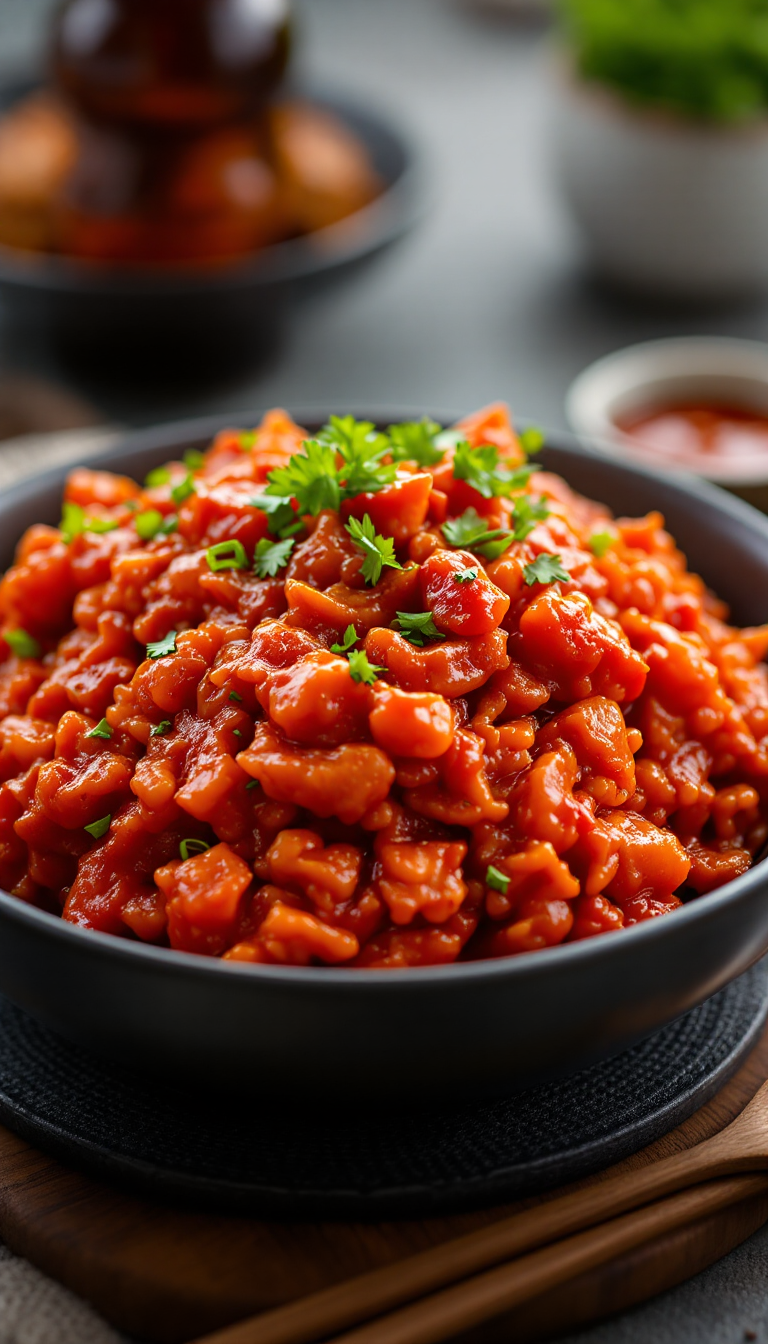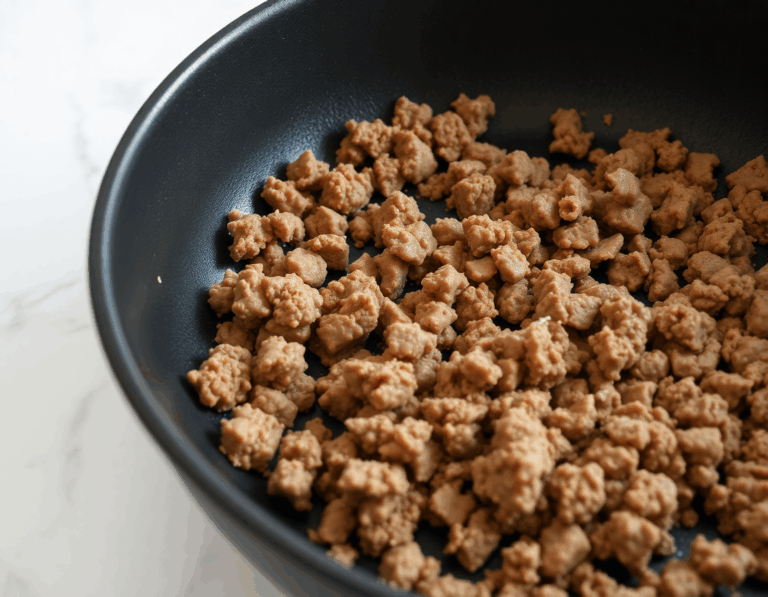
Spice lovers, unite! This irresistible spicy gochujang chicken recipe is a fiery dance of flavors on your palate—one minute you’re savoring the tender juiciness, and the next, the heat playfully lingers, like the surprise summer sun peeking through autumn clouds. I remember the first time I tried gochujang; it was like discovering a new color in the spectrum—so vibrant, so unexpected!
Steps
- Boil a pot of salted water and cook your choice of noodles as per the instructions on the package. After draining, rinse the noodles and mix them with butter to prevent sticking.
- In a large skillet, cook the ground meat of your choice (beef, turkey, or chicken) until fully browned and cooked through.
- While the meat cooks, mix all sauce ingredients in a bowl, noting that any coconut cream chunks will dissolve when mixed with hot noodles.
- Once the noodles are ready, drain and return them to the pot, adding about half of the prepared sauce. Mix thoroughly to coat the noodles.
- Combine the cooked meat with the noodles and pour in the remaining sauce, stirring over low heat to let the flavors meld together.
- Serve the prepared dish, garnishing with chopped scallions, sesame seeds, cilantro, and, if desired, additional red pepper flakes for heat.

Ingredients
- 1 pound ground beef, turkey, or chicken
- 12 ounces rice noodles or preferred noodles
- ¼ cup low sodium gluten-free soy sauce (tamari)
- ¼ cup gochujang paste (ensure it’s gluten-free)
- 2 tablespoons coconut cream
- 2 teaspoons tomato paste
- 2 tablespoons water
- 2 tablespoons honey or brown sugar
- 1 tablespoon toasted sesame oil
- 1 tablespoon rice vinegar
- 2 teaspoons minced garlic
- 1 teaspoon freshly grated ginger
- ½ teaspoon red pepper flakes (adjust to taste)
- 2 tablespoons butter (for tossing noodles)
Nutritional Values
Calories: 2036kcal | Carbohydrates: 268g | Protein: 100g | Fat: 64g | Saturated Fat: 24g | Fiber: 8g | Sugar: 44g
FAQ
- What type of noodles can I use for this recipe?
- You can use a variety of noodles such as brown rice soba noodles, ramen noodles, white or brown rice noodles, udon noodles, or even spaghetti. Use whatever you have available. If you’re looking for a gluten-free option, brown rice noodles or zucchini noodles work well.
- What exactly is gochujang?
- Gochujang is a thick, sticky fermented chili paste that is both sweet and spicy, commonly used in Korean cuisine. It has a bright red color and can be used as a condiment or as a base for sauces. You can typically find it in the Asian section of most grocery stores.
- Can this recipe be made vegan?
- Absolutely! The sauce can be made vegan by substituting honey with brown sugar. Instead of ground beef, you can use air-fried tofu or sesame tofu as a plant-based protein option.
- How should I store the Korean Gochujang noodles?
- These noodles can be stored in the refrigerator for up to 3 days. They can be enjoyed either hot or cold. If you wish to reheat them, using the microwave or stovetop is recommended. Ensure they are completely cooled before storing them in a container.
- Is it possible to freeze the noodles after cooking?
- While freezing is possible, it is not recommended as the noodles may lose their texture and fall apart upon defrosting. It’s best to enjoy them fresh or refrigerated.
Tips
- Adjust Spice Levels: If you prefer a milder dish, keep the spice level low by using less red pepper flakes or sriracha. You can always increase the heat by adding more later, according to your taste.
- Enhance with Butter: For a richer flavor, consider tossing the noodles with a few tablespoons of butter right after cooking. This step will give the dish a subtle, buttery texture before you mix in the sauce.
- Add Veggies for Variety: Incorporate your favorite vegetables like bell peppers, bok choy, or snap peas to add more nutrients and texture to the dish. This allows you to customize the recipe and make it more colorful and healthy.
- Storage Tips: These noodles can be stored in the refrigerator for up to three days. If you plan to reheat them, use a microwave or stovetop for best results. Just ensure they are cooled completely before storage to maintain their texture.
Equipment
- Large Skillet – for cooking the ground meat.
- Whisk – for mixing the sauce ingredients together smoothly.
